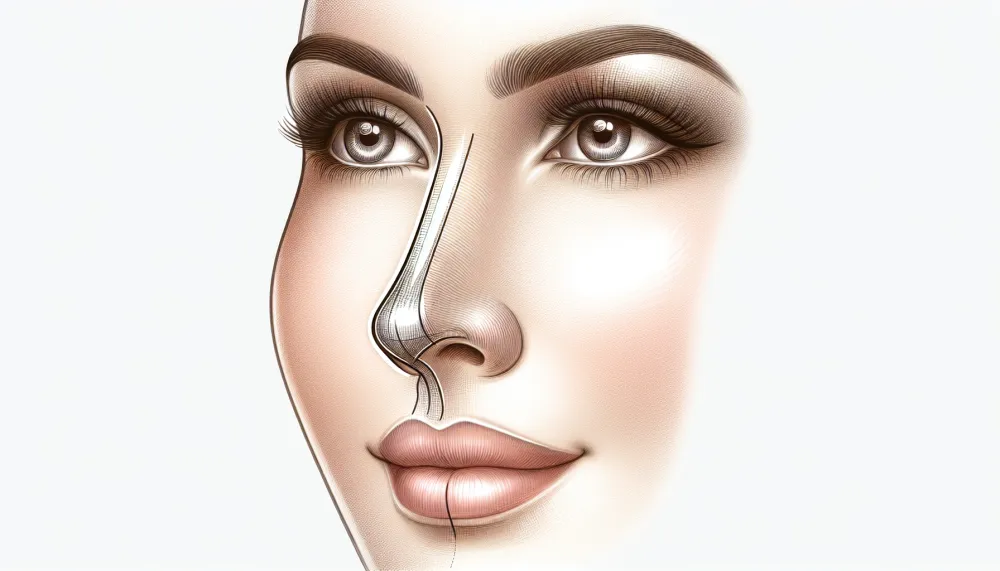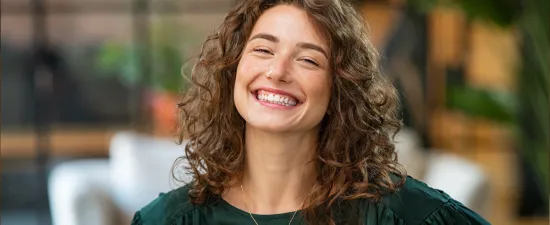If you are looking for a change in your nose tip, nose tip rhinoplasty might be the option to consider.
Directly focusing on the arc and shape of your nose’s apex, this specialised rhinoplasty spares you the extensive work and recovery of a full nose surgery. We outline here, how to cover bulbous or droopy tips.
Key Points to Note
-
Nose tip surgery, focuses on the nasal tip refinement without changing the bony parts of the nose.
-
Patients that decide to go for nose tip surgery often benefit from a quicker recovery time with a boost in confidence.
-
Selecting a qualified surgeon for nose tip surgery is so important. Experience, credentials and understanding the patient goals will lead to a great outcome.
Understanding Nasal Tip Rhinoplasty
Nasal tip rhinoplasty, is a tip plasty procedure that refines the nasal tip through small, delicate adjustments. The cosmetic surgeon does not want to change all of the nose. Instead they focus on reshaping the tip and refining its structure without altering the bony parts of the nose.
This surgical procedure, also known as nasal tip refinement, utilises specific techniques designed to modify the shape and definition of the nasal tip. Some key points about nose tip surgery include:
-
It focuses on refining the nasal tip
-
It does not alter the bony parts of the nose
-
It involves small, delicate adjustments
-
The goal is to reshape the tip and refine its structure
-
The procedure is specific to each individual
Remember, the position of the nose tip post-surgery isn’t entirely determined by the surgeon. Factors such as your body’s natural healing process and your commitment to post-operative care can affect the final result.
Types of Nose Tip Concerns
Nose tip surgery covers a variety of concerns, including:
-
Bulbous nose tip
-
Droopy tips
-
Wide nostrils
-
Over projected tips
If you have a tip that is too rounded, droops, or sticks out too much, there is a tip plasty surgery to suit your nose.
Correcting these concerns involves different techniques. If you’re dealing with a bulbous nasal tip, the surgeon may reshape the cartilage or use sutures to enhance the nose’s appearance.
A droopy nasal tip can be corrected by lifting the tip upwards, increasing the angle between the upper lip and the bottom of the nose.
Wide nostrils can be reduced and repositioned for better facial symmetry, while an over projected tip can be adjusted to a smaller projection to harmonise with other facial features.
Nose Tip Rhinoplasty vs. Full Rhinoplasty
The difference between nose tip surgery and full rhinoplasty, while both are forms of nasal surgery, they do differ in their scope. Rhinoplasty, or nose surgery, reshapes the entire nose, whereas tip rhinoplasty specifically targets the reshaping of the nasal tip.
While nose tip surgery may be perfect for subtle enhancements, it may not be enough when comprehensive reshaping of the nose is required.
The Benefits of Nose Tip Surgery

Nose tip surgery comes with numerous advantages. It is a less invasive procedure, which leads to a quicker recovery time for patients. Compared to full rhinoplasty, patients undergoing nose tip plasty typically experience quicker healing with a lower risk of complications.
Improved Facial Balance
One of the main benefits of nose tip surgery is improved facial balance. By creating more symmetrical and proportionate nasal features, nose tip rhinoplasty can enhance the overall aesthetics of the face. By addressing concerns like a droopy tip, an upturned tip, or a bulbous tip, nose tip surgery can significantly enhance facial harmony.
Boosted Confidence
Beyond physical improvements, nose tip surgery can also boost your confidence. By allowing individuals to alter a prominent facial feature that may have affected them emotionally, nose tip rhinoplasty leads to an enhanced self-esteem.
Patients who undergo nose tip refinement often experience an increase in self-esteem as a result of the improved aesthetics of their nasal appearance.
Are you a good candidate for Nose Tip Surgery
Nose tip rhinoplasty is generally postponed until after puberty, allowing the nasal structures to mature, especially in younger individuals. That means thinking about tip rhinoplasty surgery from 18 years of age.
The ideal candidates for nose enhancement are those who:
-
Have a well-defined nasal bone structure, including the nasal bones
-
Require only subtle enhancements to the tip of the nose
-
Possess sufficient cartilage integrity to avoid structural complications.
Consultation Process
Your suitability for nose tip plasty is largely determined by a consultation with one of our specialist Kensington Medical nose surgeons.
During the initial consultation, our plastic surgeon will explain the process, examine your nose, discuss recovery and after care and answer any questions. They will show you before and after photos of nose tip rhinoplasty patients. They will take photos of your nose and show you how your nose will look post surgery. At Kensington Medical we recommend a second consultation to ensure both the patient and surgeon have covered all questions and the patient and surgeon are comfortable in the exciting next step.
Nose Tip Rhinoplasty Techniques and Procedures
A variety of techniques exist to enhance the nasal tip.
The choice between an open and closed approach depends on the degree of invasiveness and the specific adjustments required, which subsequently impacts potential anesthesia methods.
An open rhinoplasty provides wide access for significant adjustments to the nasal tip, especially beneficial for more complex cases like the noses affected by trauma.
The closed rhinoplasty technique, using internal nose incisions, is preferred to avoid visible scars while performing nasal tip corrections.
One technique is the intra-cartilaginous technique, is designed to define the nasal tip without altering the bridge. Intranasal markings using a suction tip enable precise sculpturing along the nasal tip’s alar rim, preserving its support and aesthetics.
The Joseph method, which relies on scar tissue formation after nasal cartilage removal, can sometimes lead to undesirable results such as a boxy or asymmetric tip. Techniques that modify the cartilage or utilise suturing methods can help reshape a bulbous nose tip, achieving a more defined look.
The most important outcome is to ensure you see a highly experienced surgeon who is known for rhinoplasty surgery. At Kensington Medical our surgeons have vast experience having held substantive posts in the NHS in plastics trauma units. They have carried out hundreds and hundreds of rhinoplasties.
Anesthesia Options
For tip rhinoplasty depending on the preferred technique local anesthesia or a general anaesthesia will be advised. For general anaesthesia we use TIVA which ensures a speedy recovery and no nausea.
Recovery and Post-Operative Care
Following post-operative care is crucial. Patients are advised to:
-
Keep protective paper bands in place for 4-5 days to support the healing process and prevent impacts to the nose.
-
Reduce swelling and accelerate recovery by using flexible ice packs and resting.
-
Avoid anti-inflammatory medication unless prescribed.
-
Consider dietary considerations and sleeping positions to help in reducing discomfort from post-surgical swelling.
Patients should avoid blowing their nose, engaging in strenuous activities, and consuming spicy foods to prevent dislodging the internal structure and aggravating the nasal tissue.
The downtime for nose tip surgery is approximately three weeks, with bruising subsiding within 10-14 days and swelling diminishing over 6-8 weeks.
At Kensington Medical your post-operative appointments will be arranged before surgery so you can feel comfortable in your road to recovery.
Potential Risks and Complications
Despite their relative rarity, risks and complications can arise in nose tip rhinoplasty. However, these can be minimised when the procedure is performed by a highly skilled rhinoplasty surgeon. One potential risk is the impact on nasal breathing.
Preserving the nasal valve during surgery is key for ensuring normal breathing after the procedure.
Cost Considerations for Nose Tip Surgery in the UK
At Kensington Medical a nose tip surgery price from £5,800. Various factors can influence the tip rhinoplasty cost, such as the surgeon’s expertise and reputation, the location, hospital and the complexity of the procedure.
Insurance Coverage
In your financial deliberations, understanding what your insurance might cover is crucial. Private health insurance typically doesn’t cover surgeries that are purely cosmetic in nature; however, it may cover procedures deemed medically necessary. For instance, after an accident, it may be covered by insurance.
For claims related to reconstructive surgery, it’s generally required that the insurance policy must have been in effect both at the time of any incident that necessitated the surgery and when the surgery is actually performed.
Choosing the Right Surgeon for Your Nose Tip Surgery
The process of selecting an appropriate plastic surgeon for your tip plasty procedure is importance. Your surgeon should be registered with the General Medical Council and listed on the specialist register for their surgical specialty.
Choosing a Tip Plasty Plastic Surgeon
A nose tip rhinoplasty can refine a nasal tip without undergoing a full rhinoplasty. It is a less invasive option and can address a bulbous tip through to wide nostrils. Choosing a surgeon with experience in all types of rhinoplasty surgery is important.
To find out if you are suitable for a rhinoplasty tip contact us to arrange a nose tip consultation, or call us to find out more.
To find out more about our expert facial plastic surgoens click here.
Frequently Asked Questions
How much does nose tip surgery cost UK?
Nose tip surgery at Kensington Medical costs from £5,800. This price includes a number of consultations, pre and post operative care, the surgeon cost, hospital cost and anesthetists cost.
Deciding on the right surgeon with extensive experience in a rhinoplasty procedure is crucial. Cost should not be the deciding factor to achieving aesthetic facial features.
How painful is nose tip surgery?
After the procedure, you may experience swelling, bruising, and mild discomfort for a few days, but you will be given anaesthesia during the surgery to minimise pain. Pain relief will be given for post operative pain.
Is it safe to have nose tip surgery?
While nose tip surgery is generally safe, like any surgery, it carries some risks such as the potential for infection. However, these risks can be reduced by following prescribed requirements before and after the procedure.
Is tip plasty safer than rhinoplasty?
Yes, a tip plasty is generally considered safer than a full rhinoplasty due to the smaller area of the nose being operated on, reducing the associated risks.
What is nose tip surgery?
Nose tip surgery, also known as tip rhinoplasty, involves refining the nasal tip without altering the bony parts of the nose. It is a less invasive procedure.

